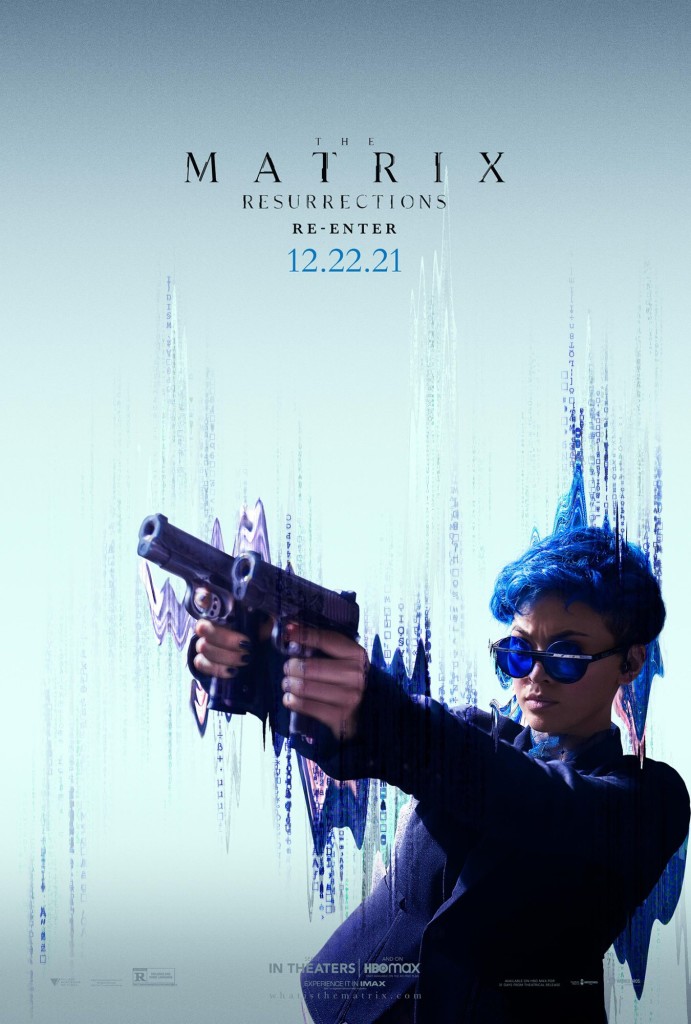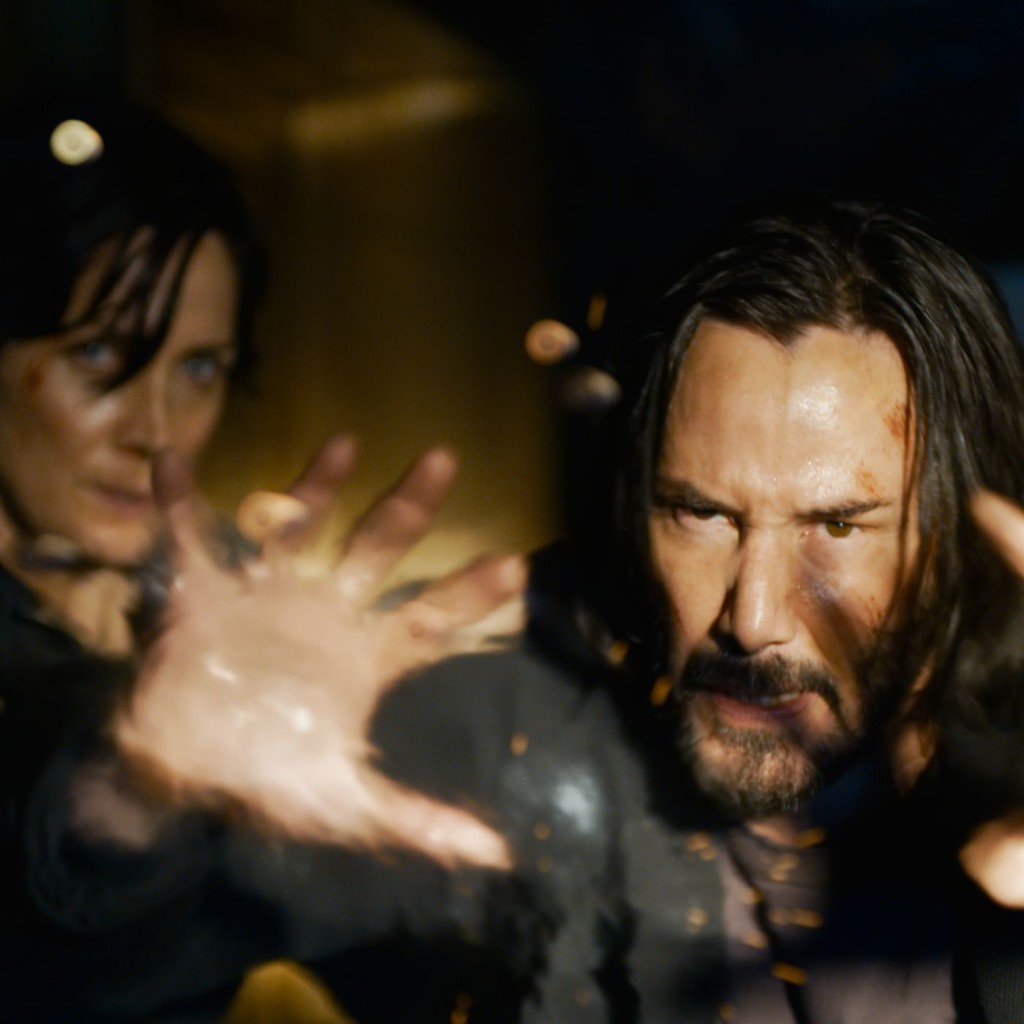Does the ballsiest franchise sequel since Fury Road deliver on the wild chances it takes?
Genre: Sci-Fi
Premise: 50-something game developer Thomas Anderson starts to believe that the game he’s developed, “The Matrix,” may be rooted in reality.
About: Pretty much every major creative in town has come to WB with a Matrix pitch over the past decade and a half. But it took Keanu Reeves becoming an action star again with John Wick for WB to finally greenlight the fourth film in the series. The movie’s production was suspended when Covid hit and Lana Wachowski seriously considered scrapping the sequel. The cast, however, desperate to see it completed, convinced her to keep going. The script was written by Lana and her Sense 8 writers, David Mitchell and Aleksandar Hemon.
Writer: Lana Wachowski, David Mitchell, and Aleksander Hemon
Details: 2 hours and 27 minutes
Let’s be real.
When you’re showing up for a Matrix review, you’re showing up to either hear, “GREATEST MOVIE EVER” or “WORST MOVIE EVER.” Anything in between is an insignificant opinion.
Well, if that’s what you’re hoping for, you’ll be disappointed in this review. Because Matrix Resurrections takes some chances that are so wild, you can’t help but admire them, even if the end result isn’t as good as you want it to be.
This is a spoiler heavy review. You’ve been warned.
Our movie starts inside a new version of the Matrix where a fresh-faced female character, Bugs, runs into a sleeker younger copy of Morpheus. They watch a familiar scene from the original Matrix, where Trinity beats up a bunch of cops then runs for her life. But there’s something off about the scene. Trinity isn’t quite… Trinity.
Cut to the real world, where we meet an older Thomas Anderson (Neo), who’s a rich game developer. The game that made him rich? The Matrix. Thomas Anderson has no idea where these ideas and concepts for “The Matrix” came from. But he’s created a trilogy of games based around a trio of characters – Neo, Morpheus, and Trinity.
After a suicide attempt, Mr. Anderson has been seeing a therapist and is starting to believe this therapist is manipulating him. So when Bugs comes to him and tells him that his game is based on something that really happened, it’s like Thomas knew it all along.
Bugs releases him from the Matrix, where we learn that both Neo and Trinity are being kept in special isolated containment units. Their pairing seems to be the central force behind the new Matrix code.
Bugs brings Neo back to the newest underground city, Io, where we meet Nairobi (from the Matrix Sequels) who’s now 80 years old. Nairobi is upset that Neo is here because she’s worked hard to keep peace with the machines. His arrival puts everyone at risk.
Meanwhile, Neo becomes determined to release Trinity (“Tiffany” in the real world) from the Matrix, so the team forms a plan. Bugs and Morpheus will handle the physical side of getting Trinity. But it will be up to Neo to convince Trinity/Tiffany to take the red pill. That won’t be an easy task considering Tiffany doesn’t know Neo, doesn’t believe in the Matrix, and has a husband and two children.
Yet when Neo arrives, Tiffany finds herself drawn to him and finally gives in. Once the Matrix realizes the power couple have teamed up, it initiates its “swarm” protocol, whereby every single person on the planet becomes a kamikaze killer. It’ll be up to Neo and Trinity to escape a city where the entire population is after them.
When you first realize what The Matrix has done with Neo, you become giddy. “They’re not really going to go through with this, are they?” you wonder, excited. And when you realize that that’s exactly what they’re going to do, your expectations for Resurrections rise from a 5 to a 50.
I never would’ve guessed in a million years that they’d build a Matrix sequel around the meta concept of Neo making a Matrix video game. Not only was it a bold choice, but it made sense. Thomas Anderson used to be a coder. He’s had these intense dreams all his life about this “Matrix” world. Naturally, he would capitalize on that, making a game out of the concept.
The addition adds some new ideas to the mythology. Was the original Matrix ever the Matrix at all? Or was it only a video game modern day Thomas Anderson created? That was what was so great about the Matrix. It was such a head-trip that, afterwards, you and your friends would discuss what it all meant, putting forth various theories that ranged from dumb to downright ridiculous.
It was the early section of this movie that held so much promise. You got the sense that Lana actually had something to say.
The problem with most sequels is that they’re conceived through a faulty process. The lens through which every movie should be conceived is that a writer has something they want to say. For example, James Cameron really wanted to say something about humanity destroying the planet in Avatar. It’s the need to get this view out there that gives the story the necessary energy to keep an audience invested.
When there isn’t a *need* to tell a story – when instead you’re just doing it for money, or because your career is in a slump, or because the studio won’t stop bothering you about it – the script exhibits a decidedly less energetic pulse. We can tell that it isn’t a life or death desire from the artist to get this story out there.
So I was encouraged by this seeming desire to say something. The story felt original. The dialogue purposeful. I had no idea where the story was going but I was excited to find out.
However, the second we get to the underground city of Io, I knew Resurrections was as dead as Dozer. Zion was a movie killer in the sequels. As was Nairobi. Yet you’re bringing both those elements back in major forms? I don’t want to turn this into a “why the Matrix sequels were terrible” thread because I’ve already written about that ad nauseam. But the brilliance of the Matrix were the scenes that took place inside the Matrix, not in the muddy CGI infested underworld.
The unfortunate reality of Resurrections is that every 15 minutes of Resurrections is worse than the previous 15 minutes. The story builds (we’re moving towards the extraction of Trinity). But the energy and the momentum fade. The Wachowskis are masters at undercutting their own narratives.
A narrative needs to move, especially a sci-fi narrative. The pacing of the original Matrix was relentless. There wasn’t a single moment that could’ve been cut. Here, with the Io stuff and some of the talkier scenes, like when The Analyst plays a game of bullet slo-mo with Trinity’s life — they dragged on, killing any momentum the story had.
Another issue is that Resurrections has a huge character problem. Bugs, the franchise’s flashy new toy, has very little to do other than verbally facilitate Neo’s second emergence from the Matrix. I don’t know what the heck they were doing with Morpheus, who is some sort of half-Morpheus who isn’t really Morpheus but he’s trying to emulate Morpheus. So he does a lot of dancing and irreverent joke-telling. It’s bizarre.
Agent Smith is now some dude who kinda dislikes Neo but also kinda likes him. At one point, they even team up. I don’t profess to know what Lana had in mind with him but he didn’t work. Maybe that’s because they wanted Hugo Weaving in the movie but couldn’t get him at the last second so they had to adjust the storyline.
Neo, meanwhile, says very little throughout the movie. Not only doesn’t he say much. But apparently, Neo only has a single power now. To hold his hands up and blast energy away from his body. I waited the entire movie for badass Neo to show up and and start doing crazy Neo sh#t. Bu it never happened. It was reminiscent of another failed sequel that I shall not mention the name of. Only that it rhymes with “Duh Blast Redeye.”
And Trinity, who arguably gets the most exciting storyline here, is absent for the majority of the second act. She really only shows up in the third act. And since, like Neo, she hasn’t said a whole lot, we don’t feel close enough to her. That’s something that really bothers me about the Wachowskis in general. They give these stupid side characters 18 page monologues. Yet their main characters can go a dozen scenes and barely utter 10 words.
It’s pretty clear that Lana didn’t get enough money to make this movie. The one great thing about those Matrix sequels is the extremes they went through to create set pieces that nobody had seen before. I mean, they built their own highway! They spent 40 days shooting a single scene (the Neo vs. 100 Smiths fight). There’s none of that insane dedication here.
The train scene was sloppy. The fixed set piece scenes (like the warehouse) felt rushed with little attention to detail. The swarm motorcycle chase was so dark you could barely tell what was going on.
While I can blame some of this on a less-than-adequate budget, Lana could’ve ditched Io and spent that money on cooler fight scenes inside The Matrix. That’s exactly what they did in the original film. The original Matrix script featured a trip to Zion but WB wouldn’t pay for it. So they had to ditch it. Should’ve done the same thing here.
There’s a lot to learn here if you’re a screenwriter. The biggest lesson one should take is that what happened in The Matrix Resurrections is the same thing that happens to almost every amateur screenplay. Which is that the writer comes in with a head of steam, spends a ton of time getting that first act right, then gives 80% of that energy to the next 15 pages. Then 60% to the next 15. Then 40% to the next 15. So the script keeps getting… not necessarily weaker. But it doesn’t have the same energy that it started with. So, if you’re a screenwriter, make sure you’ve put just as much time into what happens on page 70 as you did on page 10. Cause there’s nothing worse than watching a movie getting more and more boring as it goes on.
I don’t know what history will say about Resurrections. It seems to have some champions out there. I do commend them for trying something different. Not many franchises will take the big swing Lana did. But just because you go for the home run doesn’t mean you’re going to hit it over the wall. Sometimes you barely make contact and the ball dribbles out to third base. That’s probably the best way to describe this movie – bullet-time dribbling down the 3rd base line.
[ ] What the hell did I just watch?
[x] wasn’t for me
[ ] worth the stream
[ ] impressive
[ ] genius
What I learned: The original Matrix proves the value of combining multiple purposes into a single character. In the original movie, Trinity both recruits Neo and is his love interest. She has two purposes. In Resurrections, Bugs recruits Neo and that’s it. She doesn’t have any other purpose. As a result, she gets lost in the story once that purpose is fulfilled. The lesson here is that when you have a character, give them multiple story purposes if you can. It’ll give them more to do and make them feel more integrated into the story.



